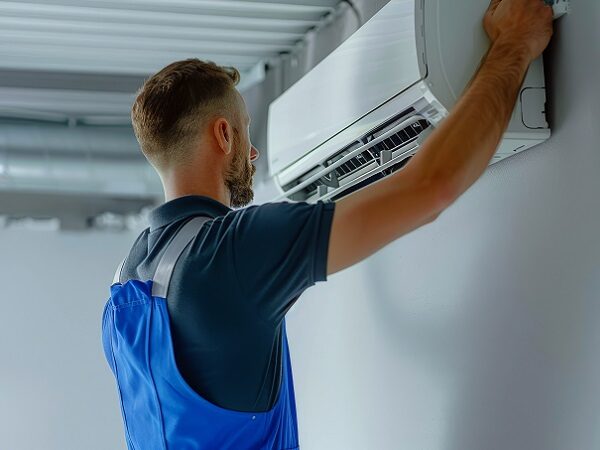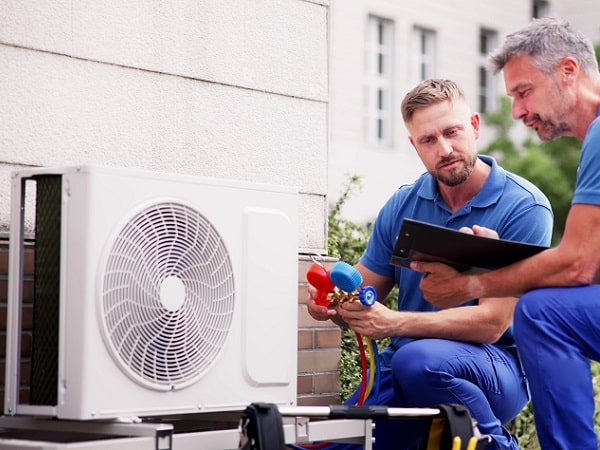Coronavirus Ventilation Advice for Schools & Childcare from the US Centre for Disease Control
The UK government has provided schools and childcare businesses with a lot of great information to help ventilate buildings as part of COVID-secure measures. But there are also some other reputable sources with some great tips that you can weave into this advice. One example is from the US Centre for Disease Control or CDC who have given a series of tips and advice specifically for ventilating schools and childcare facilities.
Let’s take a look at what they have said and how we might be able to use them in our ventilation, heating and cooling plans.
Why ventilation is so important
Ventilation is always an important part of a building design and a key part of keeping a healthy environment. It is also a big factor in the COVID-19 prevention strategies that governments around the world are recommending.
Ventilation and tips around heating and cooling can be used alongside measures such as mask-wearing and social distancing to help reduce the risk of the virus spreading. Many of these measures can be applied to homes and other large business properties too.
Bring the outdoor air inside where possible
While air conditioning and ventilation systems are a key part of fighting the virus, it is also important not to forget the most important type of ventilation available – fresh air.
Where it is safe, open windows and doors, even if it is just a crack. This helps to improve the airflow in the door and increases the chances that any virus particles are picked up and simply swept away.
Don’t open windows if there’s a safety or health risk such as falling or exposure to high temperatures. Also, consider things like problems with allergens entering the building and causing issues with allergies and asthma.
Child-safe fans can help to take that fresh air and push it around the room more. Safely secure fans to a window so that contaminated air is blow out and fresh air is pulled inside.
If the weather is up for it and you have the facilities, try to have activities, classes or break times outside. The less time spent indoors, the better.
Smart use of HVAC systems
Most schools and childcare facilities will have HVAC systems and these can be used in smart ways to help reduce the risk of coronavirus around the building.
To start with, ensure that the system has been regularly serviced by a qualified professional and that the system is adequate for the building it is heating and cooling. A good HVAC engineer will be able to tell you this.
Then look at the settings you can use. A few suggestions from the CDC include:
- Set the HVAC system to bring in as much outside air as possible and reduce air circulation – you may need to chat with an engineer to get this done, depending on the settings your system has
- Increase the total airflow to occupied spaces so that the air is mixed as much as possible and recirculated air goes through the filters as often as possible
- Turn off demand-controlled ventilation that reduces air supply based on something like temperature or occupancy so there’s a constant flow of air all day long
- If you just have a simple HVAC system that runs from a thermostat, set the fan control switch to ‘ON’ rather than ‘AUTO’ so the fan is continuously running
It is also worth settings the system for maximum airflow from outside for a period before and after the school day. The CDC recommends 2 hours before the building is occupied and the same after so as much of the day’s air is fresh as possible.
Atmostherm are experienced HVAC contractors based near Manchester. Call our team on 0800 0857510 for all your ventilation needs.
Get help to improve air quality
Due to the importance of ventilation in fighting COVID-19, this is a good point to have an engineer take a look at the system and see if some adjustments can be made to improve airflow and use.
The aim is to improve the level of air filtration as much as can be done without reducing the airflow. Having an engineer check that the filters are sized, installed and replaced in the correct way is a big part of this.
If the system is old and there’s not the budget to make significant changes, then it is worth considering portable air cleaners that use high-efficiency particulate air (HEPA) filters. These are great for cleaning the air and can be located in high-risk areas such as a sick/isolation room.
Another step that definitely needs a professional is something like ultraviolet germicidal irradiation (UVGI). This slightly scaring sounding process is ideal for schools and childcare programs to use periodically to help with a type of deep-clean for any particles of virus that may be hanging around. It is also a good option if the ventilation system is poor.
Other tips to help stay COVID-safe
Good ventilation measures also go beyond the classroom. A couple of other examples of areas to watch include restrooms and kitchens.
Here, inspect and maintain exhaust ventilation systems to make sure the air is processed as well as possible. Make sure that fans are operating at full capacity while the children are in school and for around 2 hours afterwards.
Another area is on the buses used to bring kids to school. Keep windows open where safely possible, even if it is just a crack. Make sure of social distancing and masks for children over the staged age while on the bus or other public transport.
Managing the risks with ventilation
Even the best ventilation system cannot guarantee that your school doesn’t have an outbreak of COVID-19. But combining advice from the government and top tips like these from the CDC can help to manage the risks and even reduce them somewhat.
Getting the best expert help to go with this is also very important so that every system within the school works as well as possible and does its part to keep everyone safe.
Atmostherm are experienced HVAC contractors based near Manchester. Call our team on 0800 0857510 for all your ventilation needs.
Speak to a HVAC expert today
Enter your details below to get a call back from one of our HVAC experts.



